What to Wear Kids Indoor Skating: A Complete Parent’s Guide
Taking your kids indoor skating for the first time? You’re probably wondering what to wear kids indoor skating so they stay warm, safe, and comfortable—without ending up a sweaty mess under too many layers.
Indoor rinks can feel chilly but aren’t as freezing as outdoor ponds. That means dressing your kids is a balancing act: enough warmth to avoid shivers, but flexible enough to move, bend, and (yes) fall with ease.
In this complete guide, we’ll cover:
- Layering tips for toddlers through tweens
- Protective gear must-haves
- What not to wear
- Helpful skating extras parents swear by
One of the most common questions parents ask during winter is what to wear kids indoor skating to help them stay warm and mobile without overheating.
Heads up: This post may include affiliate links. As an Amazon Associate, I earn from qualifying purchases—at no extra cost to you. Full privacy policy and disclosure here.
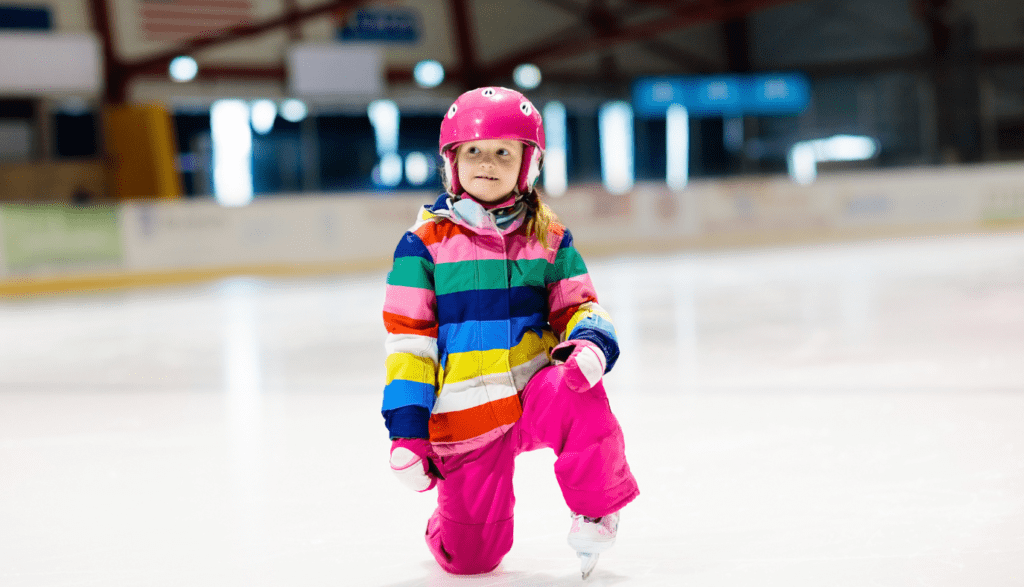
Why Proper Clothing Matters on the Ice
Even though indoor rinks are temperature-controlled (typically between 10°C–15°C or 50°F–59°F), the combination of cold air and active movement can lead to overheating or freezing if your child isn’t dressed properly.
Knowing what to wear kids indoor skating will:
- Prevent frostbite or windburn
- Allow free movement for better balance
- Reduce sweat buildup and post-skate chills
- Provide a safer skating experience overall
What to Wear Kids Indoor Skating: The 3-Layer Rule
1. Base Layer (Moisture-Wicking)
The layer closest to their skin should be lightweight and breathable.
✅ Try this: Thermal Base Layer Set for Kids – Amazon
Avoid cotton, which traps sweat. Opt for:
- Merino wool or synthetic thermal tops
- Athletic long underwear
- Compression leggings (if they’re not too tight for comfort)
2. Mid Layer (Warmth)
This insulating layer adds warmth without bulk.
Great options:
- Lightweight fleece
- A hoodie or long-sleeve shirt
- Down or puffy vest (for older kids who tend to get cold easily)
🎯 If you’re skating on a weekly basis, investing in a good-quality fleece jacket for kids will pay off.
3. Outer Layer (Protection)
While not always necessary for short skating sessions, many rinks still feel drafty. Add a light waterproof shell or a softshell jacket for comfort.
For toddlers especially, a full zip-up fleece suit or water-resistant snowsuit (without bulk) works wonders.
⛸️ Tip: A jacket with a zip front makes bathroom breaks way easier than a pullover.
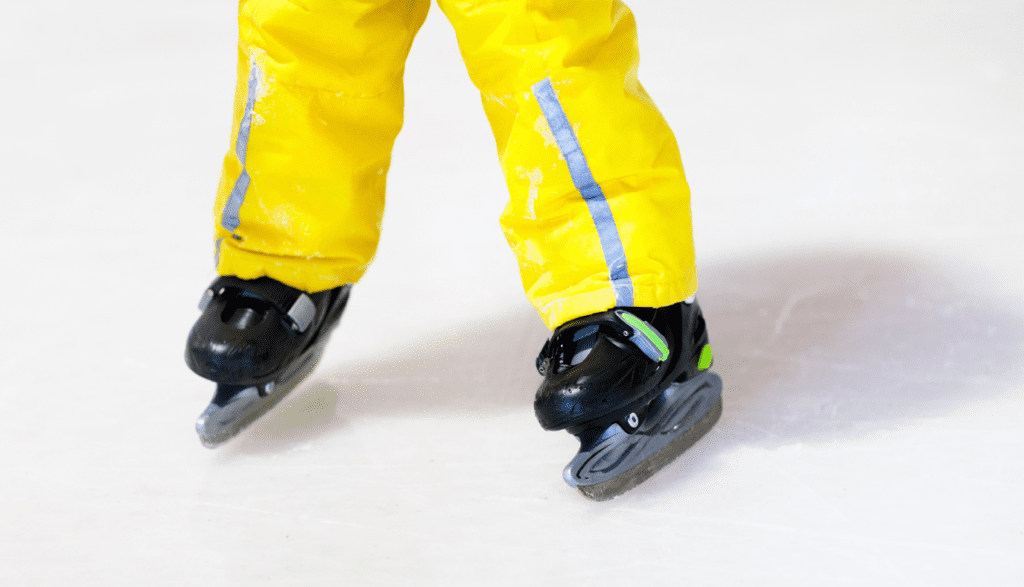
Pants for Indoor Skating
Many parents are unsure what to wear kids indoor skating when it comes to bottoms. The key is warmth without bulk, especially for beginners who fall often.
Pants should be flexible, warm, and moisture-resistant. Avoid jeans—too stiff and they get very cold if your child falls.
Best pants for indoor rinks:
- Fleece-lined athletic pants
- Insulated leggings under windbreaker pants
- Joggers with stretch
- Snow pants for very young or new skaters
Gloves, Hats & Helmets
Even if the rink is indoors, fingers can still get cold—especially if your child falls often.
Must-haves:
- Waterproof gloves or mittens
- A snug-fitting helmet (bike or skate-specific)
- Thin hat or headband under the helmet if it’s allowed
⛑ According to Skate Canada, helmets are mandatory for beginner skaters under age 18.
Skates: The Right Fit = Happy Feet
Choosing proper footwear is just as important as knowing what to wear kids indoor skating overall—it impacts balance, comfort, and safety on the rink.
If you’re renting, be sure the skates:
- Are snug, with no heel lift
- Allow some toe wiggle
- Are tied securely all the way up
🏒 For regular use, invest in a good adjustable pair like these Kids Adjustable Ice Skates.
Bonus tip: Thin socks are better than bulky ones. Thicker doesn’t mean warmer—it actually reduces blood circulation!
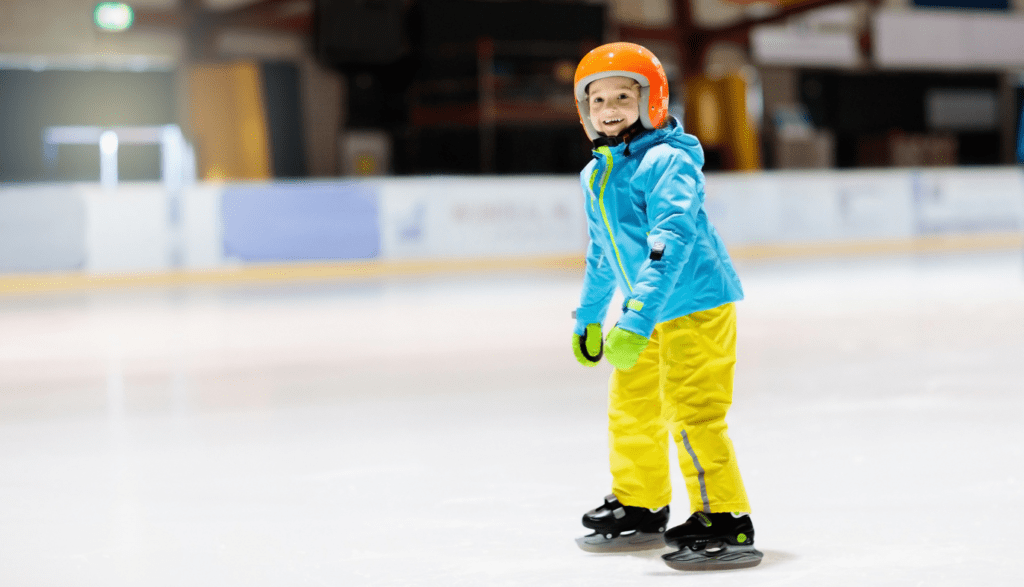
Optional (But Smart) Extras
Once you’ve figured out what to wear kids indoor skating, pack a bag with extra gloves, snacks, and blade guards to make rink visits stress-free.
Here’s what seasoned rink moms bring along:
🧺 Skating bag checklist:
- Blade guards
- Dry towel for post-skate cleanup
- Snacks and water
- Extra gloves
- A thermos of hot chocolate for afterwards (you’re the MVP!)
What NOT to Wear
❌ No jeans
❌ No dresses (unless layered with leggings and a jacket)
❌ No scarves or loose accessories (they can get caught)
❌ No bulky coats that limit movement
Dressing by Age Group
👶 Toddlers (2–4 Years)
With toddlers, figuring out what to wear kids indoor skating is all about flexibility, warmth, and ease of bathroom access.
- Fleece onesie or two-piece snow set
- Thermal base layers
- Mittens with clips (so they don’t go missing)
- Adjustable toddler skates
🧒 Kids (5–9 Years)
- 3-layer setup (thermal + fleece + softshell)
- Thin gloves
- Stretchy pants
- Light helmet or toque under a certified helmet
👧 Tweens (10–12 Years)
Hockey helmet with cage for first-timersbut then the pandemic hit and we outgrew the skates (and gained a kid).
- Light layers they can adjust
- Zip-up hoodie over base layer
- Sport leggings or joggers
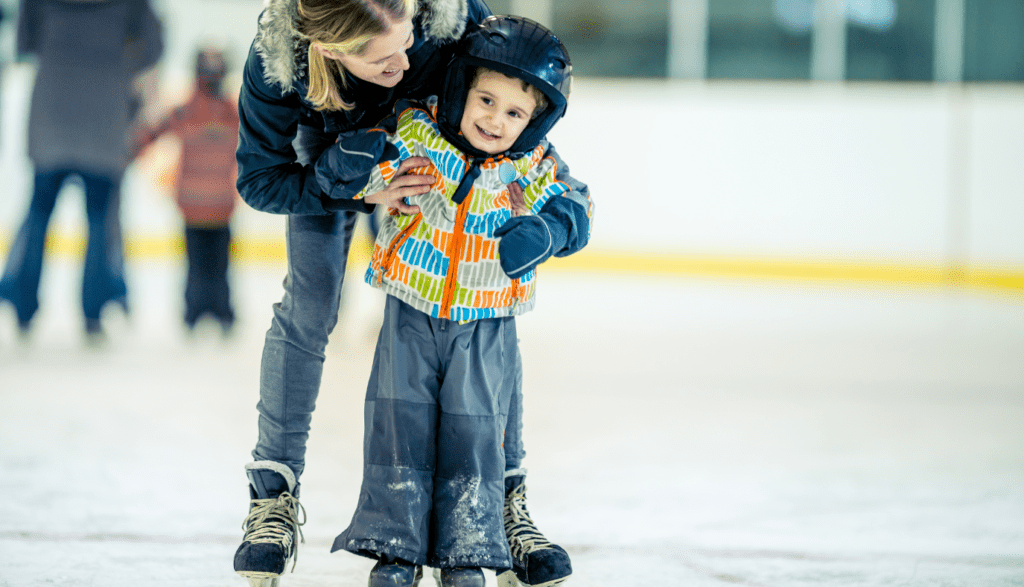
Indoor Rink Etiquette Tips for Parents
If it’s your child’s first skate:
- Teach them to fall and get up safely (knees down, hands on knees, stand up slowly)
- Arrive early to dress and tie skates
- Don’t force perfection—expect a few tears or tumbles
- Ask rink staff if beginner “walkers” or penguin pushers are available
✔️ For skate sizing help, Pro Hockey Life’s size guide is super helpful.
✔️ Learn about rink safety rules from Skate Canada.
✔️ The Canadian Paediatric Society explains helmet safety for recreational sports.
If you’re looking for more ways to enjoy winter together, be sure to check out our Realistic Winter Bucket List for Kids with simple, cozy ideas.
Looking for more active hobbies for your child? You might love our list of Best Extracurricular Activity Ideas for Kids.
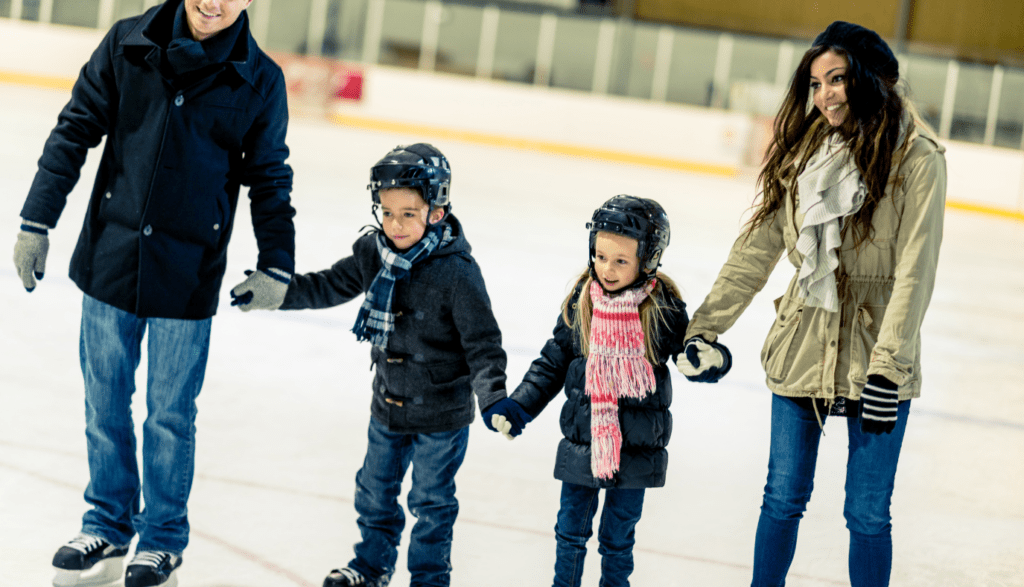
👩👧 Frequently Asked Questions
Can my child wear snow pants to an indoor rink?
Yes—especially if they’re beginners and likely to fall. Just make sure they’re not too bulky to restrict movement.
What if the rink doesn’t allow hats under helmets?
Use ear-warming headbands or balaclavas made specifically for helmets. They provide warmth without bulk.
Are bike helmets OK for skating?
Yes, for beginners—just make sure it’s snug and certified. But hockey or multi-sport helmets are better if your child skates regularly.
Should kids bring a change of clothes?
Definitely. If they fall a lot or get sweaty, a dry outfit keeps them comfortable afterward.
What if my child refuses to wear gloves?
Try gloves with a favorite character, or let them pick their own pair. Explain they’re for protection and warmth—even pros wear them!
What’s the most important part of dressing kids for indoor skating?
It starts with understanding what to wear kids indoor skating from top to bottom: base layers, safe skates, and protective gear.
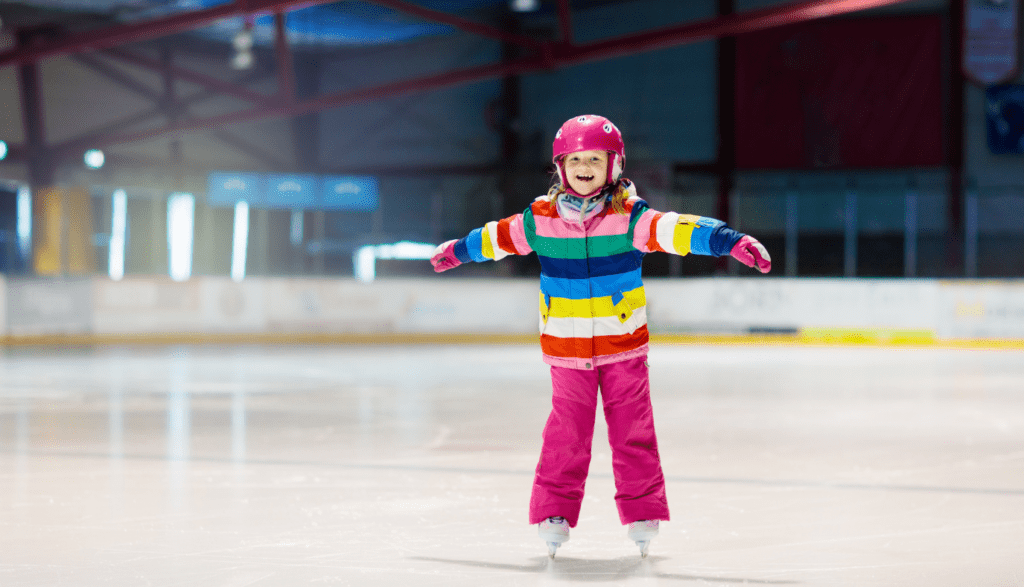
Final Thoughts: Keep It Fun and Low-Stress
Once you know what to wear kids indoor skating, your whole family can focus on having fun and building confidence on the ice.
Dressing your child for indoor skating doesn’t have to be complicated. With the right layers and gear, they’ll be warm, comfortable, and ready to enjoy their time on the ice (and fall in love with skating!).
📌 Save This for Later!
Don’t forget to save this post on Pinterest! Just click the image below to pin it to your Winter Activities for Kids board.
Got a funny story about your child’s first time on the ice? 🎉
Drop it in the comments—I’d love to hear it!
